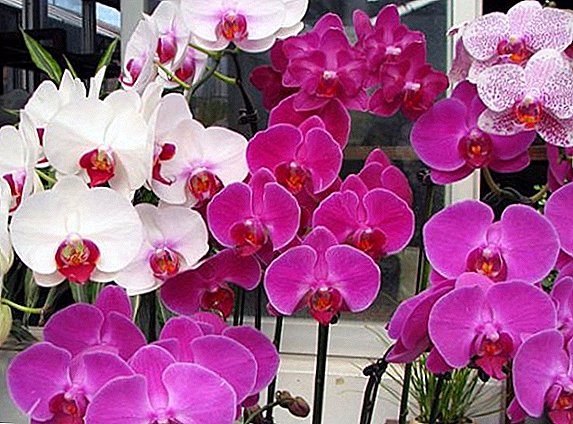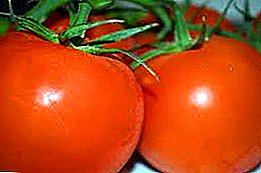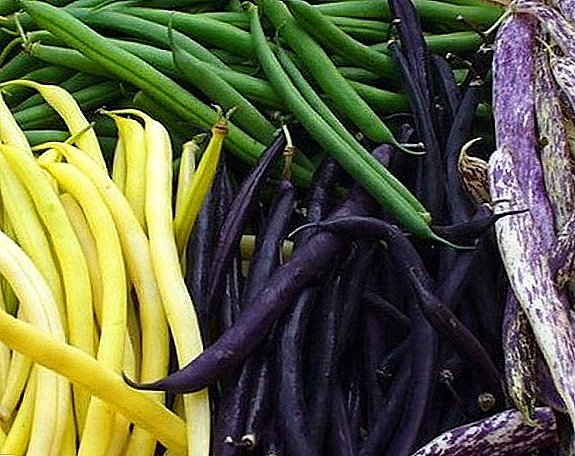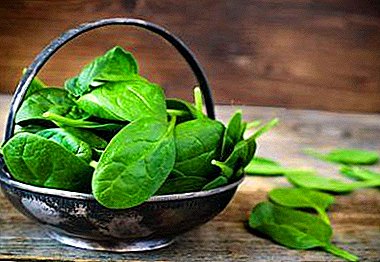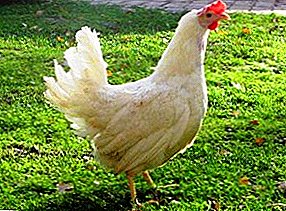 It is no secret that many country houses, and even dwellings in villages, are still heated with the help of a stove in which firewood is burned. As a result of this process, the owner of the farm has a lot of charcoal and ash, which are usually immediately emitted. However, charcoal can be used as a fertilizer for the garden, so you can protect the area from weeds and pests, as well as regulate the soil moisture. Consider this possibility in more detail.
It is no secret that many country houses, and even dwellings in villages, are still heated with the help of a stove in which firewood is burned. As a result of this process, the owner of the farm has a lot of charcoal and ash, which are usually immediately emitted. However, charcoal can be used as a fertilizer for the garden, so you can protect the area from weeds and pests, as well as regulate the soil moisture. Consider this possibility in more detail.
Charcoal: how to get fertilizer
Speaking of charcoal, first of all, you need to figure out what it is.
 Firstly, these are black wood residues obtained by slow (cold) combustion with minimal oxygen access. Thus obtained substance has many positive properties, which include:
Firstly, these are black wood residues obtained by slow (cold) combustion with minimal oxygen access. Thus obtained substance has many positive properties, which include:
- chemical inertness (thanks to this, it can lie in the earth for a thousand years, without decomposing at all);
- high absorption properties (ability to absorb an excessive amount of aluminum oxide or ordinary water);
- high porosity (as a result - a huge surface area).
In addition, getting into the ground, charcoal as a fertilizer is able to hold nitrogen from the air, turning it into forms accessible to crops. It also plays the role of a catalyst for the vital activity of the humus biosphere.
Did you know? How to use charcoal in the garden, the first to come up with the Indians of Peru. They began to add it to the earth, previously obtained by burning trees growing in the jungle.
Over time, soil scientists from different countries of the world came to the conclusion that it is coal that makes Peru's poor soil suitable for growing various crops. However, they did not know that at a burning temperature of 400-500 degrees (it was in such conditions that the forests were burned by the Indians) the resins of the wood used did not burn, but harden and cover the pores of charcoal with a small layer.
 Such resins have a high ability to ion exchange, since the ion of any substance is easily connected to them, after which it is very difficult to wash it (even in conditions of heavy precipitation). At the same time, the roots of plants or hyphae of mycorrhizal fungi digest it well.
Such resins have a high ability to ion exchange, since the ion of any substance is easily connected to them, after which it is very difficult to wash it (even in conditions of heavy precipitation). At the same time, the roots of plants or hyphae of mycorrhizal fungi digest it well.
Useful properties of charcoal in agriculture
It should be noted that the experience of using fertilizer from charcoal in our country is not as great as we would like, and it is out of the question to feed it to animals. Nevertheless, some scientists argue that ground charcoal has a positive effect on the growth and meat qualities of fattening piglets (at least, this is what Tatiana Vladimirovna Morozova’s thesis research presents).
Of course, if you are not sure, then it is better not to experiment with animals, but as far as growing plants is concerned, then the question of whether charcoal can be used as a fertilizer should perhaps be answered in the affirmative. There are reasons for this, and here are some of them.
Soil moisture control
As we mentioned earlier, charcoal placed in the soil saves plants from watering and root decay during rainy periods.
 It actively absorbs excess moisture, and on dry days gives it back, thus acting as a kind of moisture regulator in the soil. In addition, water-soluble nutrients are collected on unburned particles, consisting of humus and fertilizers, which are also very useful for plants. Charcoal helps maintain the looseness of the soil, improves the porosity and permeability of the earth, allowing atmospheric air and the rays of the sun to penetrate to the roots of plants.
It actively absorbs excess moisture, and on dry days gives it back, thus acting as a kind of moisture regulator in the soil. In addition, water-soluble nutrients are collected on unburned particles, consisting of humus and fertilizers, which are also very useful for plants. Charcoal helps maintain the looseness of the soil, improves the porosity and permeability of the earth, allowing atmospheric air and the rays of the sun to penetrate to the roots of plants.
Weed and pest protection
The presence of charcoal in the ground also makes it possible to cope with weeds and pests. For example, sprinkling the soil around the plants with crushed coal will save the crops from the presence of slugs and snails, since it will be very difficult for them to move on such a surface. Larger parts will help in weed control, not allowing them to germinate (in particular, the superficial introduction of such unburned residues gives a positive result in the fight against moss).
In addition, the presence of charcoal in the charcoal area inhibits the development of insect pests such as nematodes and wireworms.
Did you know? The remnants of unburned wood can also be used in chemical treatment of the soil by fumigating it with sulfuric anhydride. This sulfur disinfection can be used in any greenhouse, except for those options in which the frame is an unpainted aluminum profile.
The use of charcoal in the garden: how to feed in the soil
Where exactly charcoal is used in agriculture, we have already found out, now it remains to understand the norms of its application to the soil.
 In this matter, it all depends on the particular composition of the land and the region of your residence.
In this matter, it all depends on the particular composition of the land and the region of your residence.
For example, in the USA, in areas with poor, heavy and acidic soils, the amount of charcoal application often reaches 50% of the total soil processed.
Considering that the degree of decomposition of coal is very low (unlike wood, it does not rot), it can be used to fertilize the soil for many years after application. Charcoal, used as a fertilizer, will show a real result in three years already, if during this time you contribute up to 30-40% of the volume of the fertile layer. In this case, the fraction to make should be 10-40 mm. Undoubtedly, charcoal is very useful for plants, but sometimes wood dust is used instead, which is unable to have the same positive effect that you should know about, so as not to feed in vain illusions.
The presence of unburned wood residues in the soil prevents leaching of applied fertilizers (primarily nitrogenous) and useful substances in fields with intensive use of active irrigation. In principle, this is even good, since in this way it is possible to prevent contamination of water bodies with particles of chemical fertilizers.
Charcoal is widely used in the cultivation of various plants, so it is not surprising that questions about how to use it concern not only gardeners and gardeners, but also gardeners. It does not matter if you grow flower crops in greenhouses or in ordinary pots, in any case, this material will help you to achieve some success in your business.
 Charcoal intended for flowers can be used in a different form, which means that there are several answers to the question of how to use it in room floriculture. For example, the crushed remnants of wood process the roots of plants, accidentally damaged during transplantation or during targeted reproduction by dividing rhizomes. It is also often mixed with soil when planting plants that do not tolerate excessive moisture of the substrate (succulents, orchids, cacti, etc.).
Charcoal intended for flowers can be used in a different form, which means that there are several answers to the question of how to use it in room floriculture. For example, the crushed remnants of wood process the roots of plants, accidentally damaged during transplantation or during targeted reproduction by dividing rhizomes. It is also often mixed with soil when planting plants that do not tolerate excessive moisture of the substrate (succulents, orchids, cacti, etc.).
When grafting plants, charcoal is used in the processing of cuts, for which it must first be well ground. If you decide to rooting the cuttings in ordinary water, then just put a piece of this material on the bottom of the tank to prevent the development of putrefactive bacteria.
Important! If you do not know where to get charcoal for flowers, then first of all we recommend contacting specialized flower shops (it is sold already packaged in bags or briquettes), because the residues from the oven can not always ensure the proper result.
The color and density of purchased charcoal may vary depending on the type of wood that was used to make it.



